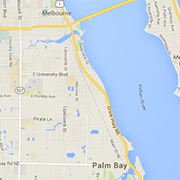Why You Need Flood Insurance

As flood insurance pricing is being restructured, the only constant is change. The Federal Emergency Management Agency (FEMA) announced an initiative called Risk Rating 2.0, which will tie premiums to the actual flood risk facing individual homes nationwide starting in October 2020.
What is changing?
Currently, flood insurance pricing is based largely on flood zones. Risk Rating 2.0 will determine flood risk by incorporating information such as different types of flood, the distance a building is from the coast or another water source, or the cost to rebuild a home. By reflecting the cost to rebuild, it could deliver more equitable rates for policyholders of lower‐value homes. Conversely, rates are likely to go up in neighborhoods with the greatest exposure to flood risks, which could hurt property values in those areas.
How much will current rates be impacted?
FEMA uses the example of two homes in a 100‐year flood plain. The first home, at the edge of that zone, faces low risk of flooding from inland flooding or storm surge; the second faces higher risk from both. Under the current system, each home pays the same premium. With the changes, the first home’s premiums would fall by 57 percent, while premiums for the second home would more than double.
Is flood insurance necessary?
Even if it is not required, having flood insurance is prudent. Florida is flat and is subject to torrential rains caused by low pressure systems, tropical depressions, tropical storms, and hurricanes. Many people incorrectly assume that the government will assist financially if they incur flood damage. The reality is that federal disaster assistance is only available if the president formally declares a disaster.
What is covered under standard flood insurance?
Standard flood insurance, purchased through the National Flood Insurance Program (NFIP), protects the dwelling structure (building) and personal property (contents). There is a separate deductible and limit for each. For single‐family residential, federal flood insurance coverage is capped at $250,000 per building and $100,000 for contents. Several exclusions apply. An area such as a basement that is underneath what is considered the structure’s first floor may have limited flood insurance protection. Typically, flood insurance does not cover docks or any structure that is over water, including boat houses. Flood insurance also does not cover the land upon which the building is situated.
Are there other options?
Often, standard flood insurance doesn’t provide adequate coverage. Fortunately, there are alternatives available through private market flood insurance. Private market providers offer flood insurance with increased limits and additional coverages.
Selecting the most suitable insurance coverage for the best value is important. That’s why Florida Insurance Hub represents multiple providers offering solutions to fit individual resources and needs. Florida Insurance Hub is an independent insurance agency serving all of Florida with personal and commercial insurance providers for home, auto, business, and flood insurance.
For a complimentary risk assessment, contact Florida Insurance Hub at 321‐219‐7600 or www.floridainsurancehub.com.
Dee Thomas is an insurance broker and lifelong Florida resident. She is actively involved in the Brevard community, where she serves as an advisory board member for the City of Cocoa US‐1 Corridor Community Redevelopment Agency, a member of the Historic Cocoa Village Playhouse’s Aladdin Society, and a Legacy Foundation benefactor for the Historic Cocoa Village Playhouse. In her spare time, Dee pursues hobbies including knitting, cooking, reading and learning American Sign Language (ASL).
Read more articles in our DIGITAL MAGAZINE.








